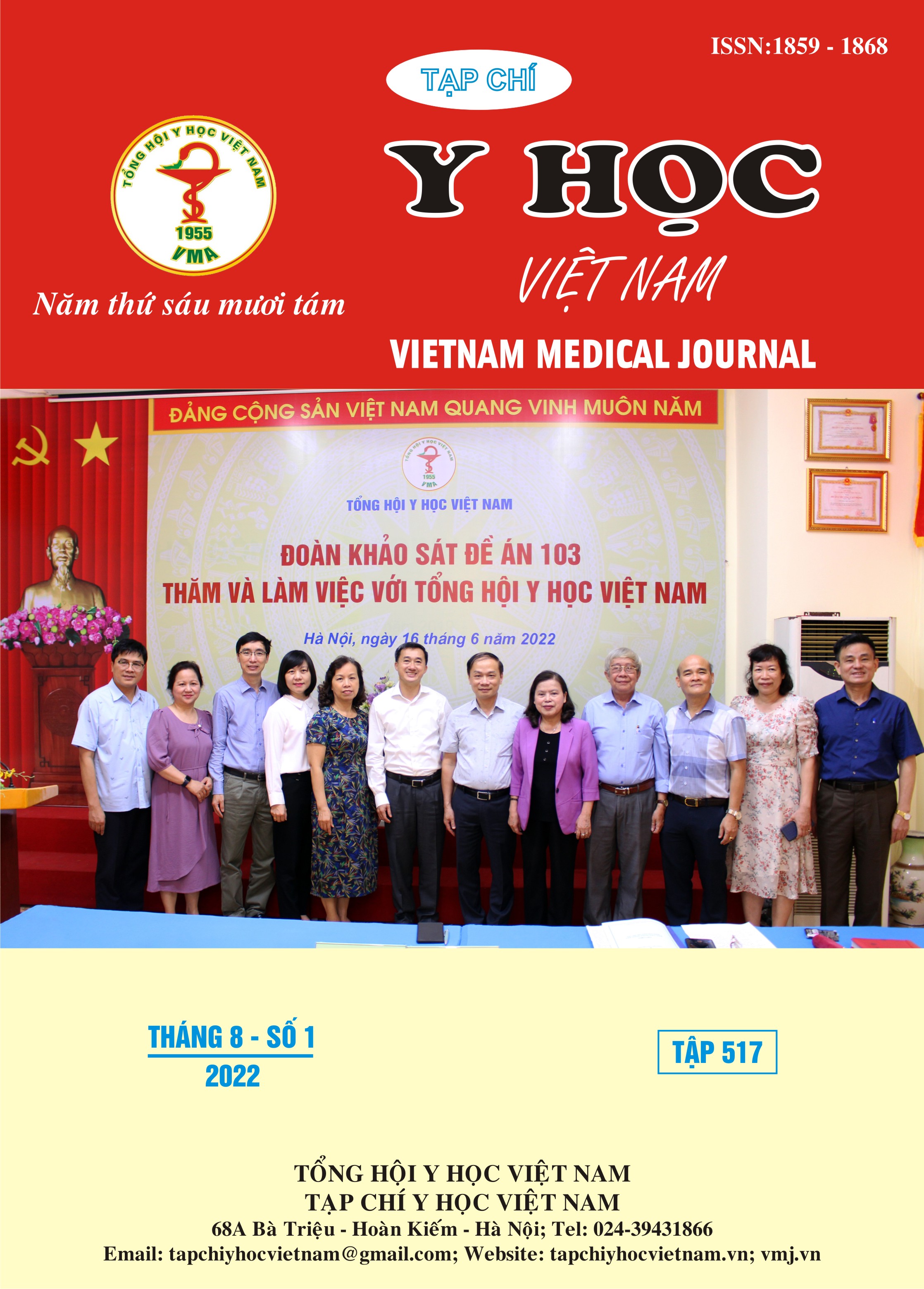CLINICAL AND PARACLINICAL CHARACTERISTICS HOSPITAL ADMITTED COVID-19 PATIENTS
Main Article Content
Abstract
Objectives: Describe the clinical and subclinical characteristics and determine the rate of admission to intensive care, mechanical ventilation and death of COVID-19 patients admitted to hcmc hospital for rehabilitation-professional diseases. Subjects and methods: We conducted a cross sectional descriptive study on 104 COVID-19 patients. Results and conclusion: 42.3% was male. Mean age 61.7 ± 13.7. The common symptoms were fever (76.9%), shortness of breath (74%), fatigue (53.8%). Common comorbidities were hypertension (53.8%), diabetes (25.9%), gastritis (19.2%), ischemic heart disease (15.4%). Most of the patients in the study had tachycardia, increased respiratory rate, decreased SpO2, the death group compared with the recovered group had a higher median respiratory rate (32 vs 24 breaths/minute) and a lower SpO2 (78% vs. 91%), (p < 0.001). Urea, Creatinine, AST, D-Dimer, Ferritin, CRP were higher in the mortality group than in the recovered group (p<0.05). The median sodium concentration in the death group was lower than in the recovered group (p=0.008). Abnormal features on chest xray were usually interstitial, nodular reticular, alveolar opacities, and pulmonary consolidation. Most of them had on both lungs, mainly focusing on the outer third. Most (98%) have diffused and heterogeneous opacity. More than (90%) concentrated in the lower third of the lungs. Median Brixia radiographic score was 8, interquartile range 5-11. The recovered group had a significantly lower median Brixia score (p<0.001) than the death group (7 vs 11 points). The rate of mild and moderate COVID-19 was 13.4%, severe 32.7%; critical 40.4%. Besides, 73.1% of cases had indication for ICU admission. 84.6% of patients need respiratory support. 30.7% of patients had to switch to invasive mechanical ventilation during follow-up. Median hospital stay was 13 days (interquartile range 10-17.75 days). The rate of intubated patients and mechanical ventilation was 31.7%. The overall mortality rate was 29.8%.
Article Details
Keywords
SARS CoV-2, COVID-19, clinical symptoms, subclinical symptoms
References
2. Bashash Davood, Hosseini-Baharanchi Fatemeh Sadat, Rezaei tavirani Mostafa, et al. (2020), "The Prognostic Value of Thrombocytopenia in COVID-19 Patients; a Systematic Review and Meta-Analysis", Archives of academic emergency medicine. 8, p. e75.
3. Berni Andrea, Malandrino Danilo, Corona Giovanni, et al. (2021), "Serum sodium alterations in SARS CoV-2 (COVID-19) infection: impact on patient outcome", European Journal of Endocrinology. 185(1), pp. 137-144.
4. Dinesh Anant, Mallick Taha, Arreglado Tatiana M., et al. (2021), "Outcomes of COVID-19 Admissions in the New York City Public Health System and Variations by Hospitals and Boroughs During the Initial Pandemic Response", Frontiers in Public Health. 9.
5. Illg Z., Muller G., Mueller M., et al. (2021), "Analysis of absolute lymphocyte count in patients with COVID-19", Am J Emerg Med. 46, pp. 16-19
6. Ippolito D., Maino C., Pecorelli A., et al. (2020), "Chest X-ray features of SARS-CoV-2 in the emergency department: a multicenter experience from northern Italian hospitals", Respir Med. 170, p. 106036
7. Lan Fen, Zhu Chen, Jin Rui, et al. (2021), "Clinical characteristics of COVID-19 patients with complications: implications for management", Therapeutic Advances in Chronic Disease. 12, p. 20406223211041924.
8. World Health Organization (2020), World Health Organization Declares COVID-19 a 'Pandemic.', accessed, from https://time.com/5791661/who-coronavirus-pandemic-declaration/


